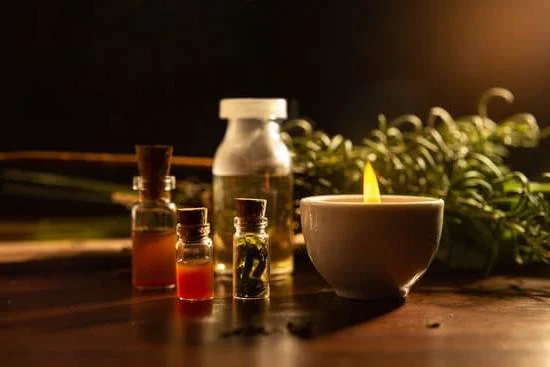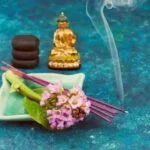What do you do with aromatherapy oils? Aromatherapy is a holistic healing practice that utilizes the therapeutic properties of essential oils to promote relaxation, enhance mood, and support overall well-being.
Essential oils are highly concentrated plant extracts that can be used in a variety of ways to achieve physical and emotional benefits. From diffusing lavender oil for stress relief to applying peppermint oil for headache relief, there are numerous ways to incorporate aromatherapy oils into your daily routine for natural wellness.
Understanding essential oils is key to unlocking their potential benefits. These oils are extracted from plants through methods like distillation or cold-pressing, capturing their unique aromatic compounds and therapeutic properties. Each essential oil has its own distinct scent and therapeutic effects, making them versatile tools for holistic healing.
Different types of aromatherapy oils offer a wide range of benefits. For example, lavender oil is known for its calming and relaxing properties, while eucalyptus oil can provide respiratory support. Peppermint oil is often used for headache relief and digestion support. Understanding the individual benefits of these oils allows you to choose the right ones for your specific needs and preferences.
Understanding Essential Oils
Essential oils are highly concentrated plant extracts that capture the natural fragrance and flavor of the plant. These compounds are obtained through a process of distillation or cold-pressing, depending on the plant material used. The result is a potent oil with the characteristic aroma and beneficial properties of the plant it was derived from.
The extraction process typically involves collecting large quantities of the plant material, such as flowers, leaves, bark, roots, or peels, and then using steam distillation to extract the essential oil. In some cases, such as with citrus fruits, cold-pressing is used to obtain the oil from the rind. The end product is a highly concentrated liquid that contains the aromatic compounds and therapeutic properties of the plant.
It’s important to note that essential oils are not the same as fragrance oils or perfumes. Fragrance oils are artificially created to mimic a specific scent and do not offer the same therapeutic benefits as genuine essential oils. When purchasing essential oils for aromatherapy or other holistic purposes, it’s crucial to ensure that you are getting high-quality, pure oils extracted through proper methods.
| Extraction Method | Plant Material Used |
|---|---|
| Steam Distillation | Flowers, leaves, bark, roots |
| Cold-Pressing | Citrus fruit rinds |
These essential oils are sought after for their various therapeutic benefits and can be used in numerous ways to promote overall health and well-being. Understanding how they are derived provides insight into their potency and versatility when used in aromatherapy practices or other holistic healing modalities.
Different Types of Aromatherapy Oils
Aromatherapy oils come in a wide variety, each with its own unique benefits and uses. Here are some popular types of essential oils and what they can be used for:
- Lavender: Widely known for its calming and relaxing properties, lavender essential oil is often used to reduce stress, anxiety, and promote restful sleep. It can be diffused in the bedroom before bedtime or added to a warm bath for a soothing experience.
- Peppermint: The invigorating scent of peppermint essential oil is commonly used to alleviate headaches and migraines. It can also help to boost energy and improve mental clarity when diffused or inhaled.
- Eucalyptus: With its refreshing and clearing aroma, eucalyptus oil is often used for respiratory support. It can help to clear congestion and ease breathing when added to a steam inhalation or diffused in the air.
These are just a few examples of the many essential oils available, each with its own set of therapeutic properties. Experimenting with different types of aromatherapy oils can help individuals find the best options for their specific needs, whether it’s relaxation, headache relief, or respiratory support.
Methods of Application
When it comes to using aromatherapy oils, there are several methods of application that can be employed to maximize their therapeutic benefits. Whether you’re seeking relaxation, relief from respiratory issues, or a mood boost, the following are some popular ways to use essential oils:
- Diffusion: One of the most common methods for using aromatherapy oils is through diffusion. This involves dispersing the oils into the air through a diffuser, allowing you to inhale them and experience their therapeutic effects. Diffusers come in various forms, such as ultrasonic diffusers, nebulizing diffusers, and evaporative diffusers, each offering unique advantages for dispersing essential oils into the air.
- Topical Application: Another way to use aromatherapy oils is by applying them directly to the skin. Essential oils are often diluted with carrier oils before being applied topically to prevent skin irritation. Popular areas for application include pulse points, temples, and the soles of the feet. When applied topically, essential oils can be absorbed through the skin and provide localized as well as systemic benefits.
- Inhalation: Inhaling aromatherapy oils directly from the bottle or by adding a few drops to a tissue or cotton ball is another effective method for experiencing their therapeutic effects. Additionally, steam inhalation involves adding a few drops of essential oil to hot water and then inhaling the steam. This method can be particularly beneficial for respiratory support and sinus relief.
- Adding to Bath Water: Incorporating aromatherapy oils into bath water is not only a luxurious way to relax but also allows for absorption through the skin and inhalation through steam. By adding a few drops of essential oil to bath water (mixed with bath salts or an emulsifier), you can create a soothing and therapeutic bathing experience.
These diverse methods of application demonstrate how versatile aromatherapy oils can be when it comes to promoting holistic healing and relaxation. By exploring different methods, individuals can find what works best for their individual needs and preferences.
Custom Blending
Custom blending of essential oils is a practice that allows individuals to tailor their aromatherapy experience to address their specific health concerns or emotional needs. By combining different essential oils, it is possible to create a personalized blend that targets particular issues, such as stress, headaches, or sleep disturbances. This section will delve into the art of custom blending and provide insights into how to create effective blends for various purposes.
Understanding Synergy
One of the key principles behind custom blending is the concept of synergy. This refers to the idea that when certain essential oils are combined, they can enhance each other’s therapeutic properties and create a more potent effect than when used individually. For example, combining lavender and chamomile essential oils can result in a blend that promotes relaxation and encourages restful sleep due to the calming properties of both oils working together.
Targeting Specific Concerns
When creating customized blends, it is important to consider the specific health concerns or emotional needs that you want to address. Whether it’s boosting focus and concentration during work hours or alleviating muscle tension after a workout, understanding the benefits of different essential oils allows individuals to formulate blends that cater to their unique requirements.
Personalizing Aromatherapy Experience
Custom blending also allows individuals to personalize their aromatherapy experience based on their scent preferences. Some may prefer floral and citrusy blends for uplifting moods, while others may find earthy and grounding blends more soothing. By experimenting with different combinations and ratios of essential oils, individuals can create a blend that resonates with them on a personal level while providing therapeutic benefits.
Safety and Precautions
Aromatherapy oils offer a wide range of benefits for holistic healing and relaxation, but it’s important to understand the safety guidelines for using them. Proper dilution is crucial when using essential oils, as they are highly concentrated and can cause skin irritation or allergic reactions if not used correctly.
It is recommended to dilute essential oils with a carrier oil, such as coconut or almond oil, before applying them to the skin. The standard dilution ratio for adults is 2% (or roughly 12 drops of essential oil per ounce of carrier oil).
Moreover, certain essential oils have potential contraindications and should be avoided by pregnant or breastfeeding women, individuals with certain medical conditions, or those taking specific medications. For example, some citrus oils can cause photosensitivity when applied topically, while oils like peppermint should not be used with children under six years old due to a risk of respiratory issues. Always consult a qualified aromatherapist or healthcare provider if you have concerns about using essential oils.
When using aromatherapy oils around children and pets, it’s important to take extra precautions. Certain essential oils can be toxic to animals if ingested or inhaled, so it’s crucial to keep them out of reach. If diffusing essential oils in a home with pets, ensure that the room is well-ventilated and that animals have an opportunity to leave the space if they desire.
Finally, always store essential oils safely away from children and pets to prevent accidental ingestion or spills. By following these safety guidelines and precautions, you can enjoy the benefits of aromatherapy oils while minimizing any potential risks.
| Safety Guidelines | Usage Precautions |
|---|---|
| Dilute essential oils properly before use. | Avoid certain essential oils during pregnancy or with certain medical conditions. |
| Be aware of potential contraindications. | Keep essential oils out of reach of children and pets. |
| Take precautions when diffusing around animals. | Ensure proper ventilation when diffusing around pets. |
Aromatherapy for Different Purposes
Using Calming Scents
One of the most popular uses of aromatherapy oils is for stress relief. Oils such as lavender, rose, and chamomile are known for their calming properties and can help to reduce feelings of anxiety and promote relaxation. Diffusing these oils or adding a few drops to a warm bath can create a tranquil environment that promotes emotional well-being.
Promoting Relaxation and Sleep
For individuals struggling with insomnia, certain essential oils can be used to promote better sleep. Oils like cedarwood, bergamot, and ylang-ylang are known for their sedative effects and can be diffused in the bedroom or applied topically (diluted with a carrier oil) to help induce relaxation and improve sleep quality.
Calming the Nervous System
When it comes to managing anxiety, essential oils such as frankincense, vetiver, and bergamot can be beneficial. These oils have grounding and calming properties that can help soothe feelings of unease and offer a sense of balance. Inhalation or topical application are effective methods for utilizing these oils during times of heightened anxiety.
Enhancing Mental Clarity
Certain essential oils like peppermint, rosemary, and lemon are known for their ability to enhance mental focus and concentration. Diffusing these oils in a workspace or using them in a personal inhaler can help improve cognitive function, boost alertness, and support clarity of thought.
Aromatherapy for Boosting Overall Mood and Well-Being
Lifting Spirits With Uplifting Scents
Incorporating essential oils such as citrus oils (e.g. orange, grapefruit), geranium, or clary sage into daily routines can help elevate mood and cultivate a more positive outlook on life. These uplifting scents can be diffused throughout the home or added to natural cleaning products to create an environment that supports overall well-being.
Conclusion
In conclusion, aromatherapy oils offer a wide range of benefits for holistic healing and relaxation. From the calming effects of lavender to the invigorating properties of peppermint and eucalyptus, there are numerous essential oils that can be used to address various health concerns and emotional needs. Whether it’s for stress relief, insomnia, anxiety, concentration, or simply boosting overall mood and well-being, aromatherapy oils provide a natural and effective solution.
It’s important to note that there are different methods of application for aromatherapy oils, including diffusion, topical application, inhalation, and adding to bath water. Additionally, custom blending allows individuals to create personalized blends of essential oils to target specific health concerns or emotional needs. However, it is crucial to follow safety guidelines for using aromatherapy oils such as proper dilution, potential contraindications, and guidelines for use around children and pets.
Overall, incorporating aromatherapy oils into your self-care routine can have a profound impact on your health and well-being. Whether you choose to diffuse them during meditation or add them to your bath for relaxation, the versatility of aromatherapy oils makes them a valuable addition to any holistic wellness approach. I encourage readers to explore the world of aromatherapy oils and discover how they can enhance their own self-care practices.
Frequently Asked Questions
What Is the Best Way to Use Aromatherapy Oils?
The best way to use aromatherapy oils is through diffusion, whether it’s by using a diffuser, adding a few drops to a bowl of hot water, or simply inhaling the scent directly from the bottle. You can also add a few drops to a carrier oil and apply it topically to your skin for an added benefit.
How Do You Use Aromatherapy Body Oils?
Aromatherapy body oils can be used in various ways, such as adding a few drops to your bathwater, mixing them with unscented lotions or creams for a moisturizing effect, or even using them in massage therapy for relaxation and stress relief. It’s important to always dilute body oils with a carrier oil before applying them directly to the skin.
Is It Safe to Inhale Aromatherapy Oils?
Inhaling aromatherapy oils is generally safe when done in moderation and properly diluted. However, some essential oils can be irritating or even toxic when inhaled in large amounts, so it’s important to follow recommended guidelines for each specific oil and to do a patch test before using it extensively.
Pregnant women and individuals with certain health conditions should also consult with a healthcare professional before inhaling aromatherapy oils.

Are you looking for a natural way to improve your health and wellbeing?
If so, aromatherapy may be the answer for you.






